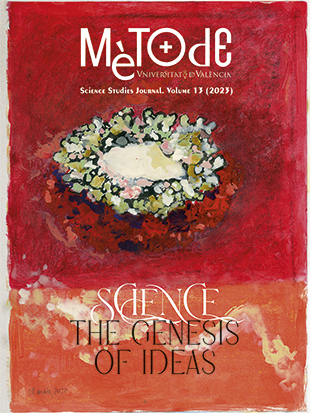An evolutionary success story: The ascent of the urban ape
DOI:
https://doi.org/10.7203/metode.13.21713Keywords:
cities, social evolution, Holocene, state formation Abstract
Abstract
Urbanistic projects have dominated the last six thousand years of our species’ history, appearing independently on all the inhabited continents. The majority of the population already live in cities and the trend seems to be increasing. An evolutionary approach entails explaining first what factors first made urban experiments possible in the late Holocene, and then what selective pressures made urban forms of social organization more successful than their alternatives. A range of factors, some environmental and some emerging from the characteristic of the human animal, explain the possibility of urbanism. Among reasons for the comparative advantage displayed by cities, it is argued that state formation and urbanization have tended to form synergistic relationships, the success of each facilitating the success of the other.
 Downloads
Downloads
 References
References
Childe, V. G. (1950). The urban revolution. Town Planning Review, 21(1), 3–17. https://doi.org/10.3828/tpr.21.1.k853061t614q42qh
Clarke, D. L. (1979). Towns in the development of early civilization. In N. G. L. Hammond (Ed.), Analytical archaeologist. Collected papers of David L. Clarke edited by his colleagues (pp. 435–443). Academic Press.
De Vries, J. (1984). European urbanization 1500-1800. Methuen.
Fletcher, R. (1995). The limits of settlement growth. A theoretical outline. Cambridge University Press.
Graeber, D., & Wengrow, D. (2018, 2 March). How to change the course of human history (at least, the part that has happened already). Eurozine. https://www.eurozine.com/change-course-human-history/
Graeber, D., & Wengrow, D. (2021). The dawn of everything. A new history of humanity. Farrar, Strauss and Giroux.
Hassett, B. (2017). Built on bones. 15,000 years of urban life and death. Bloomsbury.
Iriarte, J., Robinson, M., de Souza, J., Damasceno, A., da Silva, F., Nakahara, F., & Aragao, L. (2020). Geometry by design. Contribution of Lidar to the understanding of settlement patterns of the mound villages in SW Amazonia. Journal of Computer Applications in Archaeology, 3(1), 151–169. http://doi.org/10.5334/jcaa.45
McAnany, P., & Yoffee, N. (Eds). (2010). Questioning collapse: Human resilience, ecological vulnerability, and the aftermath of empire. Cambridge University Press.
Morris, I. (1991). The early polis as city and state. In J. Rich & A. Wallace-Hadrill (Eds.), City and country in the ancient world (pp. 25–57). Routledge.
Smith, M. E. (2009). V. Gordon Childe and the urban revolution: A historical perspective on a revolution in urban studies. Town Planning Review, 80(1), 3–29. https://doi.org/10.3828/tpr.80.1.2a
Smith, M. L. (2019). Cities. The first 6,000 years. Viking.
Ucko, P., Tringham, R., & Dimbleby, G. W. (Eds.). (1972). Man, settlement and urbanism. Duckworth.
Wengrow, D. (2018). The origins of civic life. A global perspective. Origini: Prehistory and Protohistory of Ancient Civilizations, 42(2), 25–44.
Woolf, G. (2020). The life and death of ancient cities. A natural history. Oxford University Press.
Downloads
Published
How to Cite
-
Abstract1439
-
PDF642
Issue
Section
License
![]()
All the documents in the OJS platform are open access and property of their respective authors.
Authors publishing in the journal agree to the following terms:
- Authors keep the rights and guarantee Metode Science Studies Journal the right to be the first publication of the document, licensed under a Creative Commons Attribution-NonCommercial-NoDerivatives 4.0 International License that allows others to share the work with an acknowledgement of authorship and publication in the journal.
- Authors are allowed and encouraged to spread their work through electronic means using personal or institutional websites (institutional open archives, personal websites or professional and academic networks profiles) once the text has been published.





